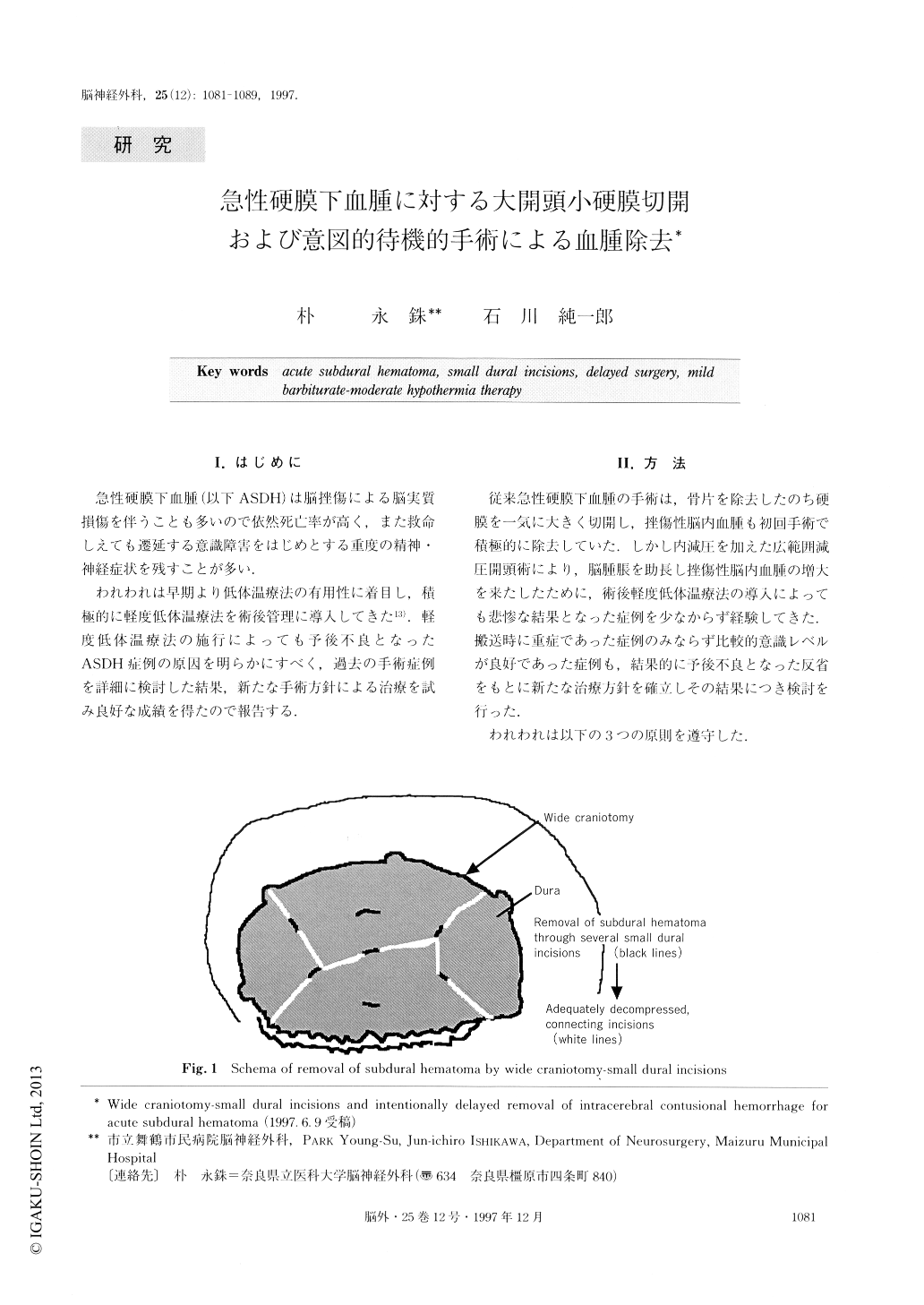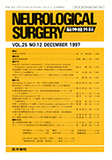Japanese
English
- 有料閲覧
- Abstract 文献概要
- 1ページ目 Look Inside
I.はじめに
急性硬膜下血腫(以下ASDH)は脳挫傷による脳実質損傷を伴うことも多いので依然死亡率が高く,また救命しえても遷延する意識障害をはじめとする重度の精神・神経症状を残すことが多い.
われわれは早期より低体温療法の有用性に着目し,積極的に軽度低体温療法を術後管理に導入してきた13).軽度低体温療法の施行によっても予後不良となったASDH症例の原因を明らかにすべく,過去の手術症例を詳細に検討した結果,新たな手術方針による治療を試み良好な成績を得たので報告する.
The outcome of acute subdural hematoma (ASDH), which can cause severe parenchymal injury, has gene-rally been unsatisfactory. The standard surgical proce-dure for ASDH is a quick and wide opening by dural incision, removal of the subdural and contusional intra-cerebral hematoma, followed by large external and in-ternal decompression.
In this study, we assessed our therapeutic strategy, consisting of three principles:
①Removal of subdural hematoma by wide cranio-tomy-small dural incisions, in well-decompressed case, connecting the small dural incisions and stanching the bleeding points on the cortical surface but not proceed-ing with contusional hemorrhage in emergency opera-tions, ②Post-operative induction of mild barbitu-rate-moderate hypothermia therapy and ③Intentionally delayed evacuation of the intracerebral contusional hemorrhage when needed.
The patients' profile is composed of an old therapy group (27 cases) and a new therapy group (20 cases) suffering from ASDH with cerebral contusion. The cli-nical outcome with the old therapeutic strategy was good recovery (GR) in 7 cases, moderate disability (MD) in 5, severe disability (SD) in 2, vegetative state (PVS) in 3 and death (D) in 10, whereas the outcome with the new strategy resulted in GR in 15 cases, MD in 3, D in 2. These clinical results indicate that the rates of mortality and severe morbidity were markedly re-duced with our new therapeutic strategy.

Copyright © 1997, Igaku-Shoin Ltd. All rights reserved.


